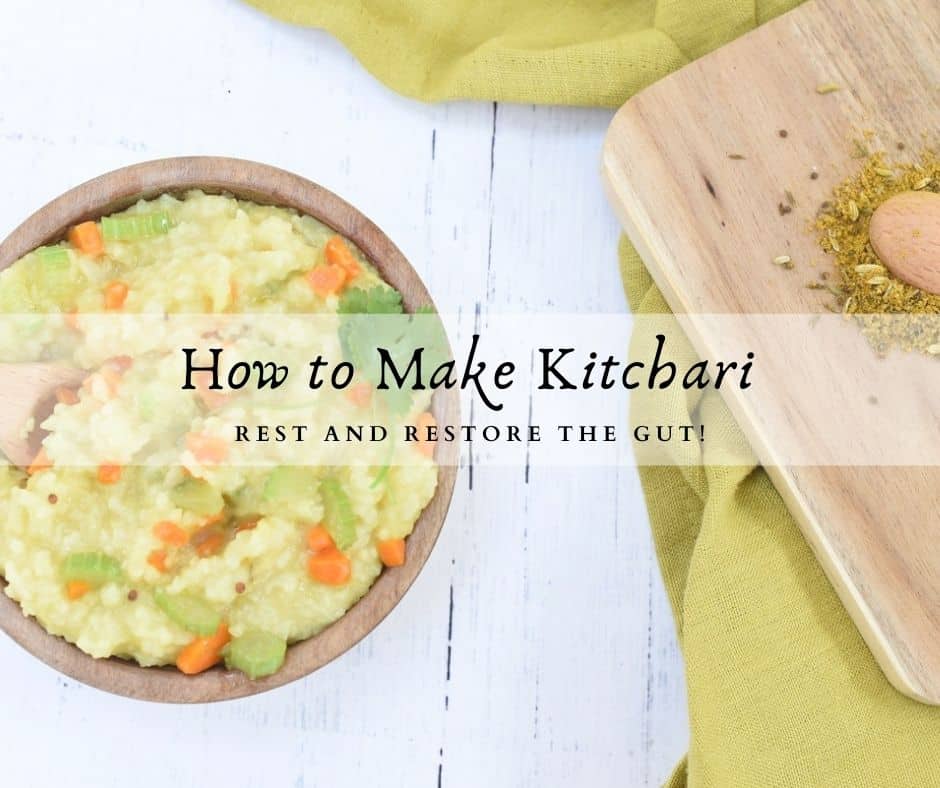Learn how to make kitchari – a traditional Ayurveda meal. Perfect to rest and restore the gut while taking great and nourishing the body.

Join the FREE Facebook Community today and dive into topics like Energy Healing, Holistic Health, Yoga, Herbs and more!
Join for free HERE.

This post may contain affiliate links. As an Amazon Associate, I earn from qualifying purchases.
Please see full Disclaimer.
The first time I made kitchari, I was blown away. I had stayed away from it for a long time because I had no idea what split mung beans were. They sounded like some exotic ingredient that would be hard to find. I know, I know…..
Turns out, they are neither hard to find nor exotic. I was just uneducated about beans!
Here I am now, making this at least once a week. I also do occasional 3 day Ayurveda cleanses with kitchari and it feels so amazing.
What is Kitchari?
Kitchari is a traditional Ayurveda meal. It is really a staple. Kitchari is gentle on the stomach and is perfect to rest and restore the gut. It is a complete protein, easy to digest and begins the body’s natural detox process.
Kitchari is made up of yellow mung beans, basmati rice, ghee, traditional kitchari spice mixture, and optional toppings (such as veggies and sweet potatoes).
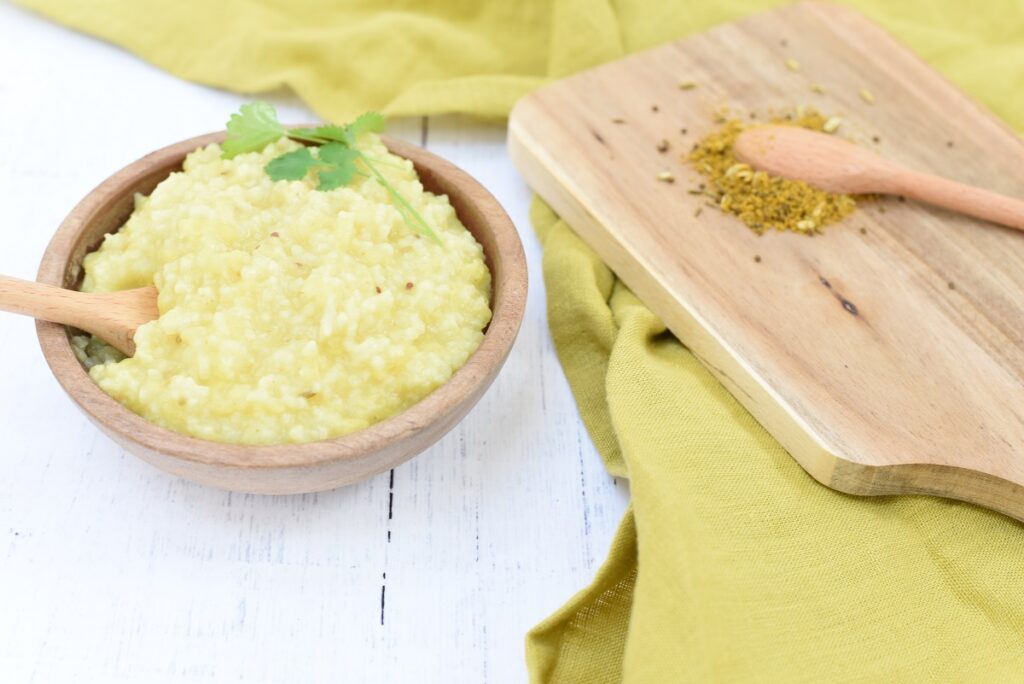
What to Top Kitchari With
You can eat it plain or put some veggies or sweet potatoes in. Those are my favorite ways to eat it. When I’m feeling like I need a little more substance, I add sweet potatoes. Other times, I am craving veggies, so I add veggies. Sometimes I add both!
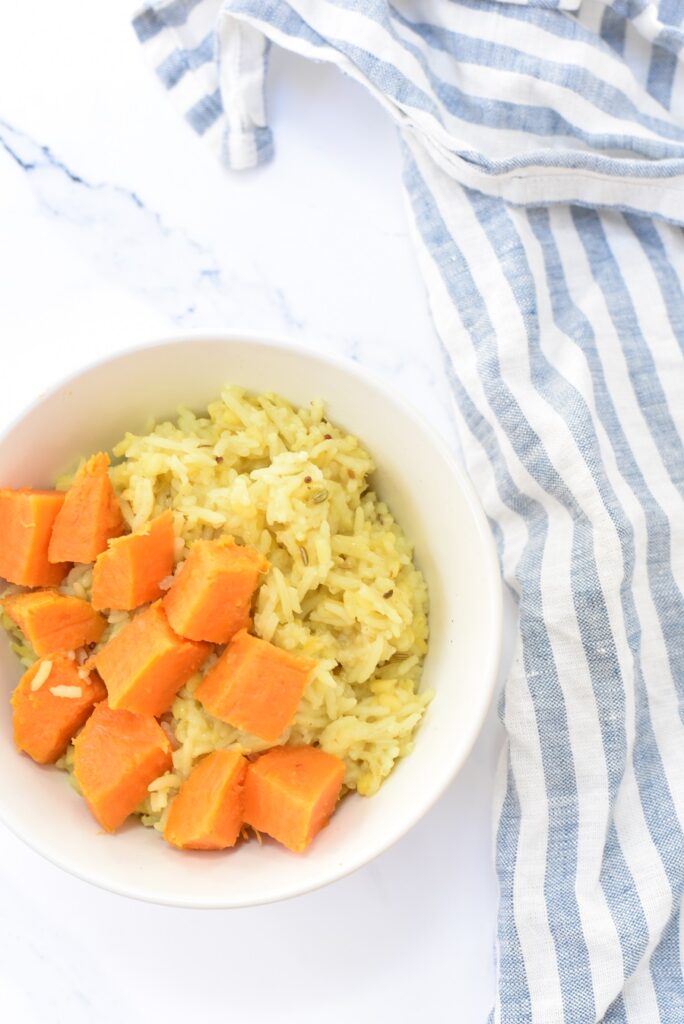
How to Make Kitchari
The night before, wash mung beans and then soak overnight. 12-24 hours.
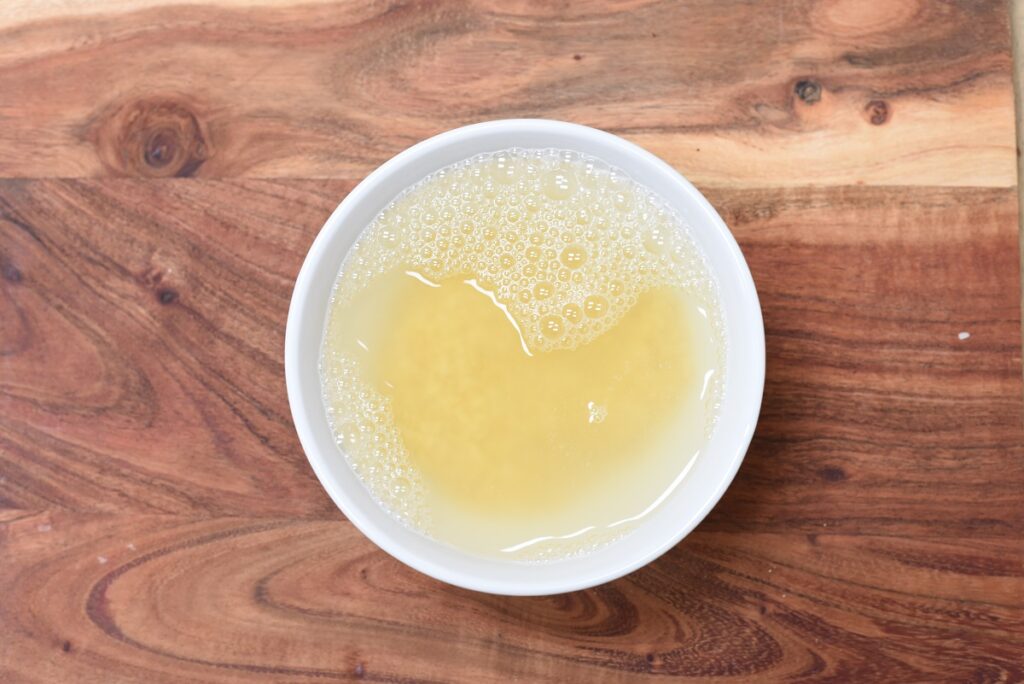
After soaking, rinse mung beans and rinse rice. In a medium sauce pan, add ghee and heat over medium heat until it melts.
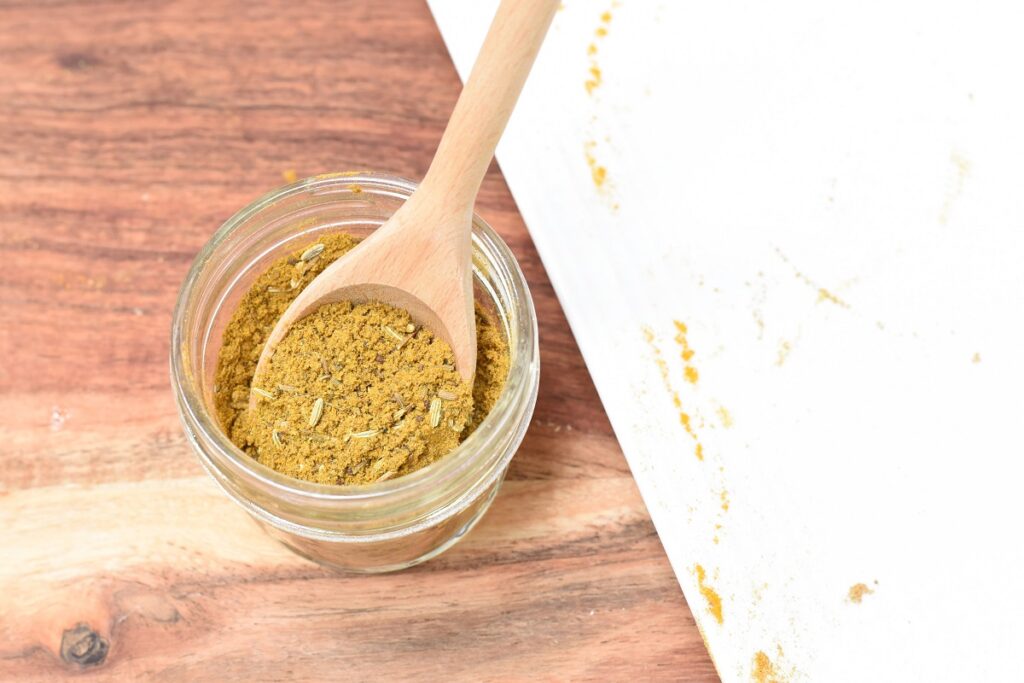
Once the ghee is melted, add spices and mix well.
Add rice to sauce pan and stir it up until the spice mixture completely covers the rice.
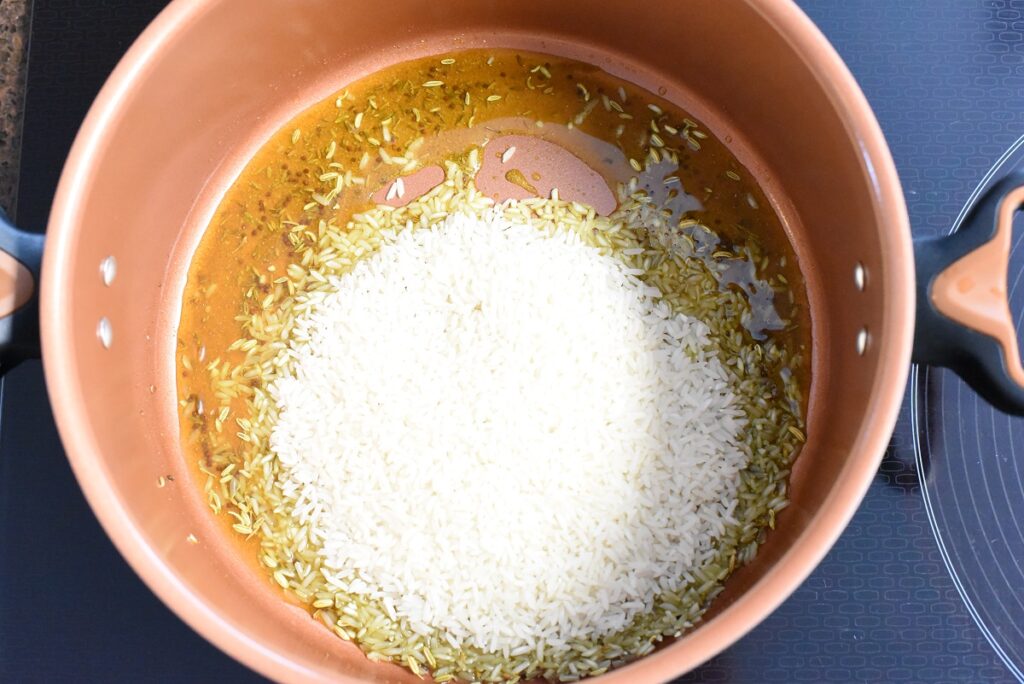
Add mung beans and give it a good mix.
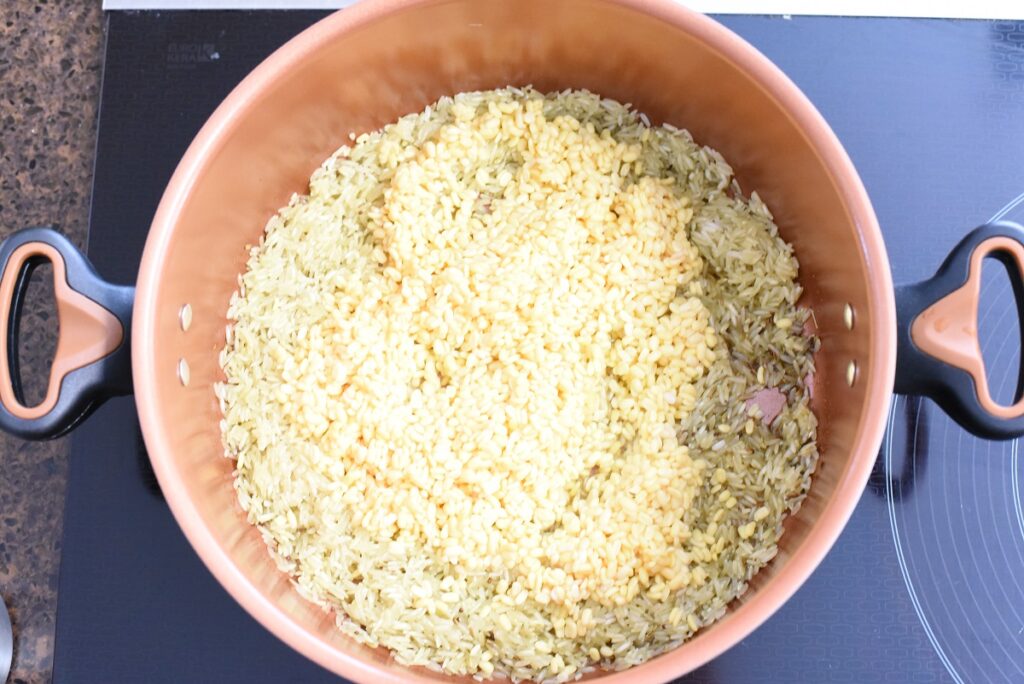
When all the rice and beans have a nice coating of spice, add water and bring to a boil (increasing heat if needed). Boil and reduce heat to low, cover and simmer for 30-40 minutes until desired doneness.
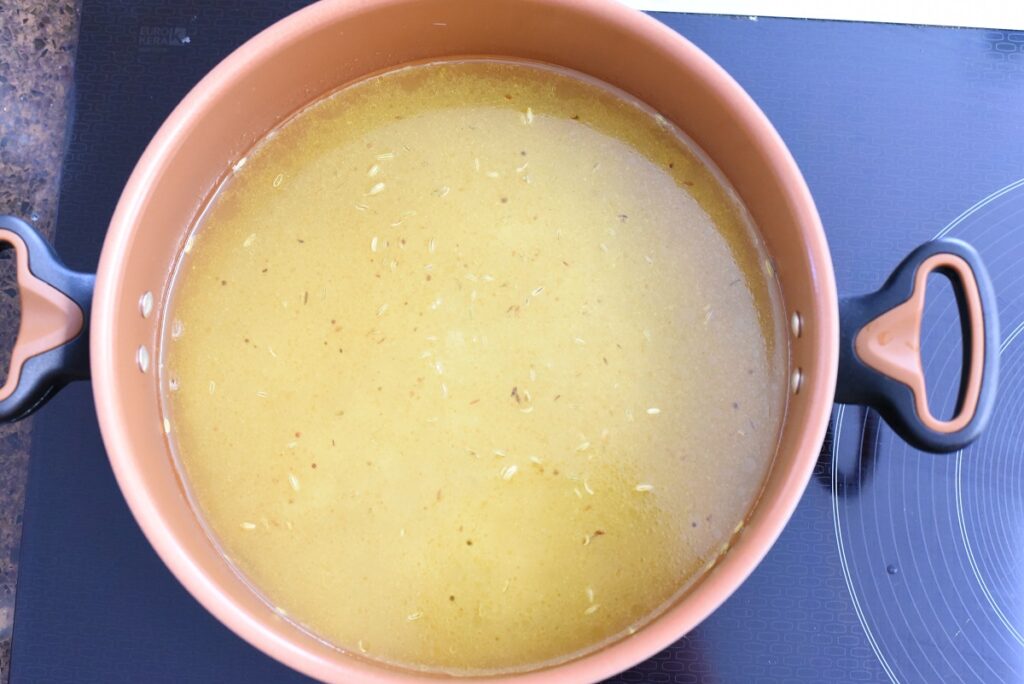
While simmering, prepare and steam veggies. I like to use carrots and celery.
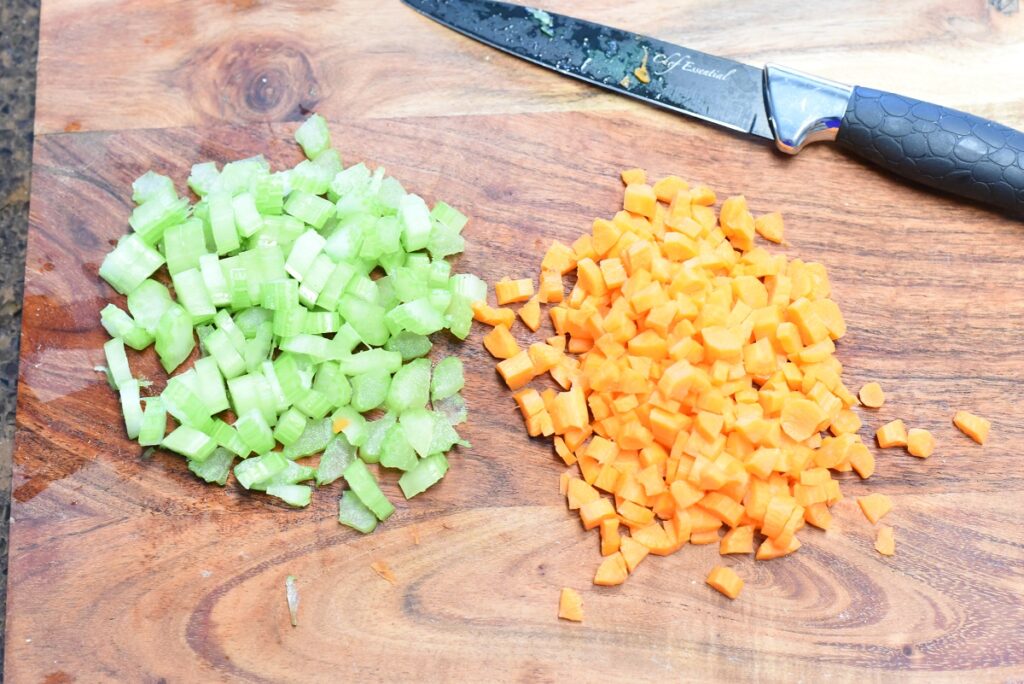
You can steam them or cook them in ghee. Your choice.
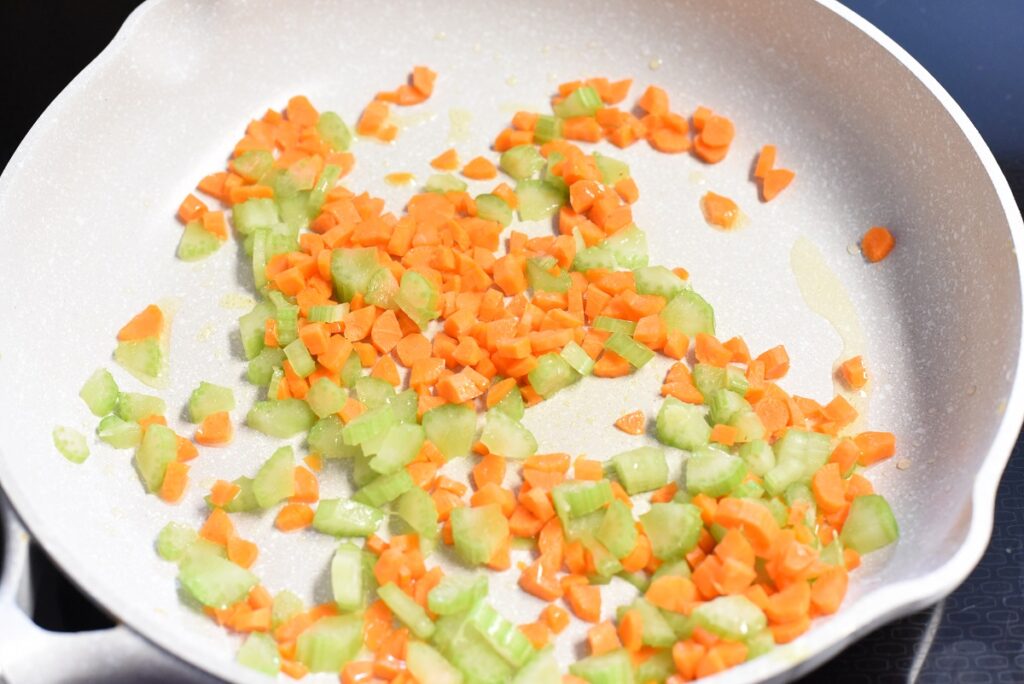
Add kitchari to servings bowls and top with steamed veggies. Or you can add the veggies at the end of cooking while still in the pot. Either way works! Serve warm.
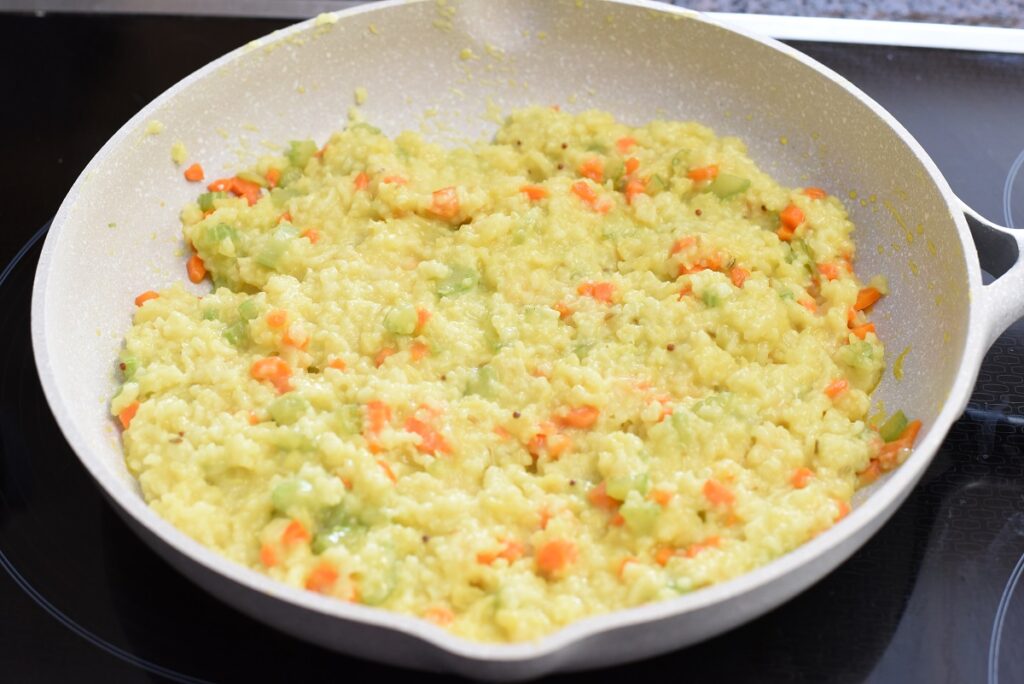
Can I Reheat Kitchari?
You certainly can! It is always best to limit microwave exposure, but if you are comfortable using one, then have at it!
Otherwise, you can warm kitchari up over low heat in a sauce pot or pan.

How to Know When Kitchari is Done?
Kitchari is done cooking when most of the liquid is absorbed. You can decide for yourself how you like it the best. You will notice in most of the pictures of kitchari and veggies in this post, it is quite liquidy. Now if you look below at my sweet potato version, it is not. Just depends on what I feel like!
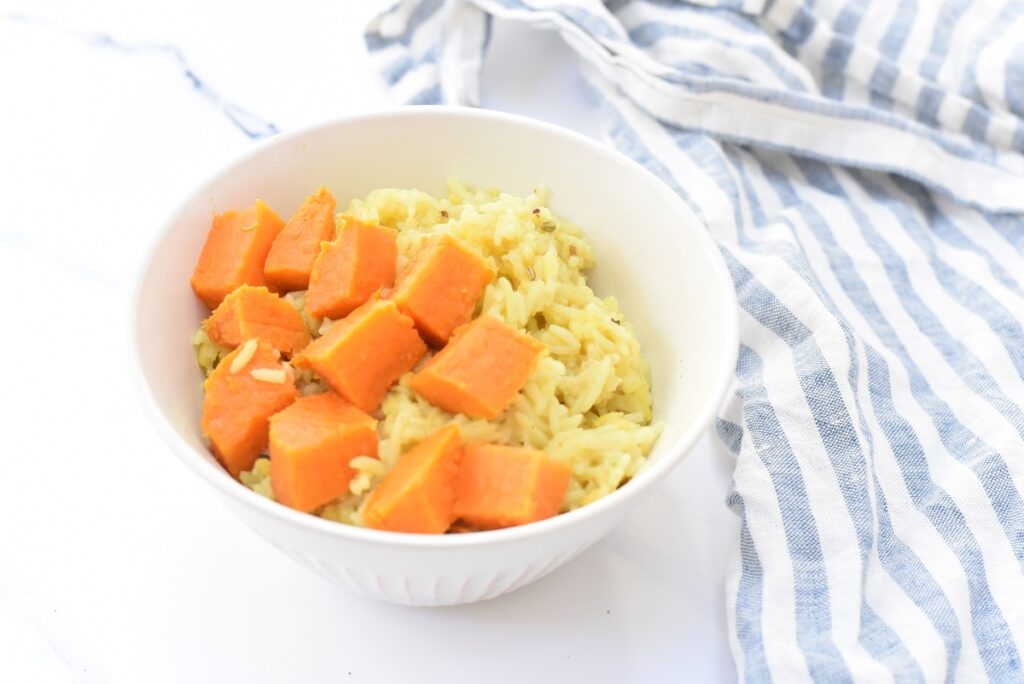
Can I Make Kitchari Spice Ahead of Time?
You sure can! I usually double or triple this Kitchari Spice Mix recipe and simply store it in a mason jar. Then when the time comes to make Kitchari, I use 1 Tablespoon of my premade kitchari spice.
Kitchari

Ingredients
- 6 cups water
- 1 cup basmati rice
- ½ cup yellow mung dal
- 2 tablespoons ghee
Kitchari Spice Mix (see notes)
- 1 tsp fresh ginger root, minced
- 1/2 tsp. cumin powder
- 1/2 tsp. coriander powder
- 1/2 tsp. whole cumin seeds
- 1/2 tsp. whole fennel seeds
- 1/4 tsp. mustard seeds
- 1/4 tsp. turmeric powder
Optional
- Steamed Veggies
Instructions
- The night before, wash mung beans and then soak overnight. 12-24 hours.
- After soaking, rinse mung beans and rinse rice.
- In a medium sauce pan, add ghee and heat over medium heat until it melts. Add spices and mix well.
- Add rice to sauce pan and stir it up until the spice mixture completely covers the rice.
- Add mung beans and water and bring to a boil (increasing heat if needed).
- Once boiling, reduce heat to low, cover and simmer for 30-40 minutes until desired doneness.
- While simmering, prepare and steam veggies.
- Add kitchari to servings bowls and top with steamed veggies. Serve warm.
Notes
You can also buy the kitchari spice mix instead of making your own.
Nutrition Information:
Yield:
4Serving Size:
1Amount Per Serving: Calories: 152Total Fat: 7gSaturated Fat: 4gTrans Fat: 0gUnsaturated Fat: 3gCholesterol: 16mgSodium: 81mgCarbohydrates: 19gNet Carbohydrates: 16gFiber: 3gSugar: 2gProtein: 4g

